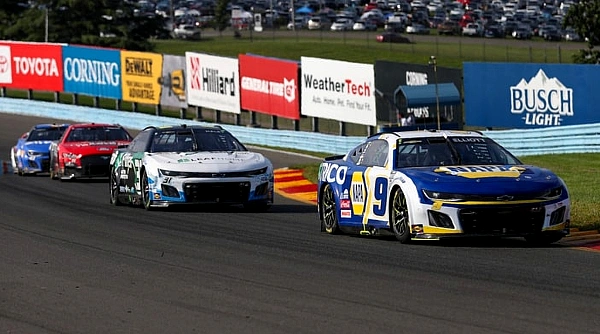Sponsorships in NASCAR are the financial engines driving the sport forward. They enable teams to compete, drivers to succeed, and fans to enjoy the high-speed experience. The symbiotic relationship between NASCAR and its sponsors is a cornerstone of the sport, underpinning its success and sustainability. The relationship between sponsors and NASCAR is intricate and multifaceted, extending far beyond the logos on cars and firesuits.
The Financial Backbone
Sponsorships are crucial to the financial viability of individual races as well as teams. The costs associated with running a competitive team are astronomical, including expenses for car development, travel, crew salaries, and more. Without sponsors, many teams simply wouldn’t be able to afford to compete.
Major corporations invest millions of dollars in NASCAR, recognizing the sport’s massive reach and dedicated fan base. These investments enable teams to build faster, more reliable cars, hire top-tier talent, and continuously improve their performance. In return, sponsors gain exposure to millions of passionate fans, many of whom demonstrate strong brand loyalty.
Impact on Teams and Drivers
For teams, securing sponsorship deals is a top priority. A strong partnership can mean the difference between contending for championships and struggling to make it through the season. Teams with substantial backing can afford to take more risks, innovate, and invest in cutting-edge technology.
Drivers, too, are deeply affected by sponsorships. The presence of a reliable sponsor can provide job security and financial stability. Conversely, the loss of one can spell disaster, potentially leaving a driver without a seat. The case of Kyle Busch and Joe Gibbs Racing is a poignant example. When M&M’s ended their long-standing sponsorship, Busch was left scrambling to find a new team, which highlighted the precarious nature of these relationships.
Beyond financial support, sponsors often influence the personal brands of drivers. Drivers are expected to represent their sponsors positively both on and off the track. This means engaging in promotional activities, appearing in advertisements, and maintaining a favorable public image. The pressure to perform well and act as a brand ambassador adds an additional layer of stress to a driver’s career.
The Ripple Effect on Fans
Sponsorships also significantly impact the fan experience. Sponsor-funded events, promotions, and merchandise deals enhance fan engagement and loyalty. Fans often develop affinities for certain brands based on their association with beloved drivers and teams. This brand loyalty is a unique aspect of NASCAR, where fans might choose products like beverages, fast food, or automotive parts based on their connection to the sport.
Additionally, sponsors help make NASCAR events more accessible and enjoyable for fans with funded giveaways, interactive experiences at tracks, and enhanced broadcasting quality via branded in-car cameras and specialty segments, as examples. Without the financial support of sponsors, many of these fan-centric initiatives would not be possible.
The Indispensability of Sponsorships
They are not just beneficial—they are vital. The sport’s business model heavily relies on these partnerships to sustain its high operational costs. From grassroots racing to the Cup Series, every level of NASCAR is influenced by sponsorships.
The essential nature of sponsorships is evident in the meticulous effort teams and drivers put into securing and maintaining the relationships. Sponsorship negotiations can be as intense and strategic as the races themselves, involving detailed marketing plans, performance metrics, and long-term commitments.
As NASCAR continues to evolve, the role of sponsorships will remain a critical factor in shaping its future, ensuring that the thrilling world of stock car racing continues to captivate audiences around the globe.

